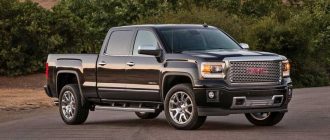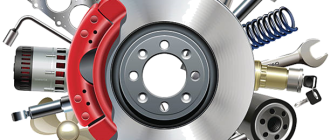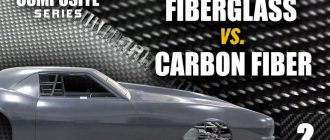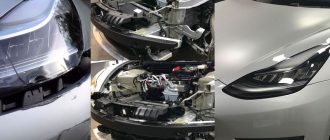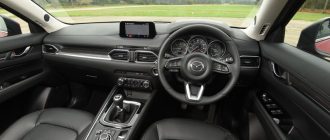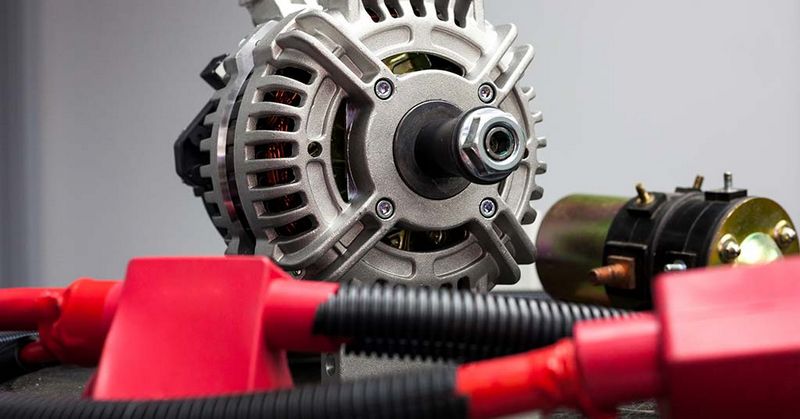
OEM vs Aftermarket Parts: Replacement Parts After a Crash
After a car crash, one of the key decisions you will need to make is choosing the right replacement parts for your vehicle. OEM (Original Equipment Manufacturer) parts and aftermarket parts are the two main options available to you. OEM parts are produced by the same manufacturer that made the original parts for your vehicle, while aftermarket parts are produced by other companies. Each option has its own advantages and disadvantages, and knowing the difference between them can help you make an informed decision.
OEM parts are often seen as the superior option, as they are built to the exact specifications of your vehicle. This means that they should fit perfectly and function just like the original parts. OEM parts are also backed by a warranty from the manufacturer, ensuring their quality and reliability. However, OEM parts can be more expensive, and they may not always be readily available for older or less popular vehicles.
On the other hand, aftermarket parts offer a more affordable alternative to OEM parts. These parts are often made by third-party manufacturers and are designed to fit a wide range of vehicles. While aftermarket parts may not be identical to the original parts in terms of quality and fit, they can still provide a suitable replacement. It is also worth noting that some aftermarket parts are actually higher in quality than their OEM counterparts, as aftermarket manufacturers can make improvements based on customer feedback.
Understanding OEM Parts
OEM stands for Original Equipment Manufacturer. When it comes to replacement parts for your vehicle after a crash, OEM parts are considered to be the best option available. These parts are made by the same manufacturer that produced the original parts used in your vehicle when it was first assembled.
One of the main advantages of using OEM parts is that they are specifically designed to fit your vehicle perfectly. Since they are made by the original manufacturer, you can be confident that they will match the quality, dimensions, and specifications of the original parts. This ensures a proper and seamless fit, which is crucial for maintaining the safety and performance of your vehicle.
Another benefit of OEM parts is their high quality. Manufacturers invest heavily in research and development to create parts that meet strict quality standards. As a result, these parts are often more durable, reliable, and long-lasting than aftermarket parts. OEM parts also typically come with warranties, providing you with additional peace of mind.
Using OEM parts can help preserve the value of your vehicle. When it comes time to sell or trade in your car, buyers and dealerships generally prefer vehicles with original manufacturer parts. OEM parts can therefore enhance the resale value of your vehicle.
However, it’s important to note that OEM parts can be more expensive than aftermarket parts. This is because they are made by the original manufacturer and often require specialized production processes. If cost is a concern, aftermarket parts may be a more affordable option. But keep in mind that they may not offer the same level of quality, fit, and warranty as OEM parts.
In conclusion, OEM parts are the recommended choice for replacement parts after a crash. They provide a perfect fit, high quality, and peace of mind. While they may be more expensive, their benefits outweigh the cost. However, if cost is a major consideration, aftermarket parts can be a viable alternative.
Advantages of OEM Parts
When it comes to replacement parts after a car crash, OEM (Original Equipment Manufacturer) parts have several advantages over aftermarket parts.
- Quality: OEM parts are made by the same manufacturer that produced the original parts in the vehicle. This ensures that they meet the same quality standards and specifications, providing a higher level of reliability and performance.
- Compatibility: OEM parts are designed to fit perfectly into the specific make and model of the vehicle. They are an exact match to the original parts, ensuring a seamless integration and preserving the integrity of the vehicle.
- Warranty: Many OEM parts come with a warranty from the manufacturer. This provides assurance to the consumer that the parts are reliable and will function as intended.
- Safety: OEM parts are manufactured to meet strict safety regulations and standards. They undergo rigorous testing to ensure that they will perform optimally and protect the occupants of the vehicle in the event of another crash.
- Longevity: OEM parts are built to last. They are made from high-quality materials and undergo thorough quality control measures. This means that they are more likely to have a longer lifespan compared to aftermarket parts.
- Insurance Coverage: Some insurance policies may cover the cost of OEM parts in the event of a crash. This can be beneficial as OEM parts are generally more expensive than aftermarket parts.
Overall, OEM parts offer numerous advantages over aftermarket parts when it comes to replacing components after a crash. They provide superior quality, compatibility, safety, and longevity, making them the preferred choice for many car owners and repair shops.
Disadvantages of OEM Parts
While OEM parts are often seen as the gold standard in replacement parts after a crash, they do come with some disadvantages:
- Higher cost: OEM parts are typically more expensive than aftermarket parts. This is because they are made by the original manufacturer and often have higher quality standards.
- Availability: OEM parts may not always be readily available or easily accessible. This could result in longer wait times for repairs, especially if the parts need to be ordered.
- Limited selection: OEM parts are only available from the original manufacturer, which means the selection may be limited compared to aftermarket parts. This can be a challenge if you need a specific part that is not offered by the OEM.
- Branding: Some people may view OEM parts as overpriced because they carry the branding of the original manufacturer. These individuals may prefer aftermarket parts that offer similar performance at a lower cost.
- Insurance coverage: Depending on your insurance policy, OEM parts may not be fully covered or may require additional out-of-pocket expenses. It’s important to check with your insurance provider to understand their coverage for OEM parts.
Despite these disadvantages, OEM parts still have their advantages in terms of quality, reliability, and compatibility. Ultimately, the decision between OEM and aftermarket parts after a crash will depend on individual preferences, budget, and the specific circumstances of the situation.
Understanding Aftermarket Parts
After a crash, you may need to replace certain parts of your vehicle. There are two main types of replacement parts: OEM (Original Equipment Manufacturer) parts and aftermarket parts. In this article, we will focus on understanding aftermarket parts and their role in the replacement process.
What are aftermarket parts?
Aftermarket parts are replacement parts that are not made by the original manufacturer of the vehicle. These parts are produced by third-party manufacturers and suppliers. They are designed to fit and function similar to the original parts, but they may not be identical in terms of quality or specifications.
Why use aftermarket parts?
One of the main reasons to consider using aftermarket parts is cost. Aftermarket parts are usually less expensive compared to OEM parts. This can be particularly beneficial if you are working with a limited budget or if your insurance does not cover the full cost of OEM parts.
Additionally, aftermarket parts offer a wider range of options. There are often multiple brands and manufacturers to choose from, giving you more flexibility in terms of quality, price, and availability. This can be especially helpful if you have an older vehicle or if the original manufacturer’s parts are hard to find.
What to consider when using aftermarket parts?
While aftermarket parts can be a cost-effective solution, it is important to consider a few factors before making a decision:
- Quality: The quality of aftermarket parts can vary. It is important to research the reputation of the manufacturer and read customer reviews to ensure you are purchasing a reliable product.
- Compatibility: Aftermarket parts may not be an exact match to the original parts. You should check the specifications and dimensions to ensure proper fitment and compatibility with your vehicle.
- Warranty: Some aftermarket parts come with warranties, while others may not. It is advisable to choose parts with a warranty to provide you with peace of mind.
The role of aftermarket parts in the replacement process
Aftermarket parts play a significant role in the replacement process, offering a cost-effective alternative to OEM parts. They provide consumers with more options and flexibility, allowing them to find the best fit for their needs and budget. However, it is important to carefully consider the factors mentioned above to ensure a successful and reliable replacement.
Advantages of Aftermarket Parts
Aftermarket parts have become a popular choice among car owners when it comes to replacement parts after a crash. Here are some advantages of choosing aftermarket parts over OEM parts:
- Cost-effective: One of the major advantages of aftermarket parts is their lower cost compared to OEM parts. Aftermarket manufacturers are often able to produce parts at a lower cost, which translates to savings for the consumer.
- Availability: Aftermarket parts are widely available in the market. Unlike OEM parts which are only sold by authorized dealers, aftermarket parts can be purchased from various suppliers and auto shops, ensuring greater availability and accessibility.
- Variety: Aftermarket parts offer a wide range of options when it comes to customization. Car owners have the flexibility to choose from different brands, styles, and materials, allowing them to personalize their vehicle according to their preferences.
- Quality: While OEM parts are known for their quality, aftermarket parts have also improved significantly over the years. Many aftermarket manufacturers now produce parts that meet or even exceed OEM standards. Additionally, aftermarket parts often come with warranties, providing assurance of their quality and durability.
- Quick availability: Aftermarket parts are typically readily available, which means that car owners can get them faster than OEM parts. This is especially beneficial for those who need their vehicles repaired quickly and cannot wait for OEM parts to be ordered and shipped.
- Competition: The aftermarket parts industry is highly competitive, which drives manufacturers to constantly improve their products. This competition leads to innovation and advancements in aftermarket parts, offering car owners more choices and better quality options.
In conclusion, aftermarket parts offer several advantages over OEM parts, including lower cost, greater availability, customization options, improved quality, quicker availability, and healthy competition among manufacturers. With these advantages, it’s no wonder why aftermarket parts are becoming a popular choice among car owners after a crash.
Disadvantages of Aftermarket Parts
Aftermarket parts, also known as non-OEM (Original Equipment Manufacturer) parts, are replacement parts that are not made by the original manufacturer of the vehicle. While these parts may be cheaper than OEM parts, they come with their own set of disadvantages:
- Poor Quality: Aftermarket parts are generally not held to the same quality standards as OEM parts. This can result in parts that are made of inferior materials or have poor craftsmanship. As a result, aftermarket parts may not fit as well or last as long as OEM parts.
- Lack of Warranty: Most aftermarket parts do not come with a warranty from the manufacturer. This means that if the part fails or causes damage, you may not have any recourse for replacement or reimbursement.
- Incompatibility Issues: Aftermarket parts may not be compatible with your specific vehicle model. This can lead to difficulties in installation and may require additional modifications to make the part fit correctly.
- Unknown Origin: Aftermarket parts can come from a wide range of sources, and it can be difficult to know their origin or if they have been tested for safety and performance. This can pose a risk in terms of reliability and safety.
- Loss of Manufacturer Support: By using non-OEM parts, you may void any remaining warranties or support from the vehicle manufacturer. This can have implications for future repairs and may affect the resale value of your vehicle.
When considering aftermarket parts as replacements after a crash, it is important to weigh the potential cost savings against these disadvantages and decide what is best for your specific situation.
Cost Comparison
After a crash, it’s important to consider the cost of replacement parts. OEM parts, or Original Equipment Manufacturer parts, are those that are made by the same manufacturer as the original parts on your vehicle. Aftermarket parts, on the other hand, are made by third-party manufacturers.
- OEM Parts: OEM parts are generally more expensive than aftermarket parts. This is because they are made by the original manufacturer and often have a higher level of quality.
- Aftermarket Parts: Aftermarket parts are typically less expensive than OEM parts. They are made by third-party manufacturers and may vary in quality.
While OEM parts may be more expensive, they often come with a warranty from the manufacturer. This can provide peace of mind knowing that if there are any issues with the replacement parts, you will be able to get them fixed or replaced at no additional cost.
When considering the cost of replacement parts, it’s important to also think about the long-term effects. While aftermarket parts may be cheaper initially, they may not have the same level of quality as OEM parts. This could result in additional repairs down the line, costing you more in the long run.
| Cost | Higher | Lower |
| Quality | Generally higher | May vary |
| Warranty | Often included | Varies by manufacturer |
| Long-term cost | May be lower due to higher quality | May be higher due to potential lower quality |
In conclusion, when choosing between OEM and aftermarket parts for your vehicle after a crash, it’s important to consider the cost. While OEM parts may be more expensive initially, they often provide a higher level of quality and may have a warranty. Aftermarket parts may be cheaper upfront, but they may have a lower level of quality and could result in additional repairs in the future. Ultimately, the choice depends on your budget and priorities.
Quality Comparison
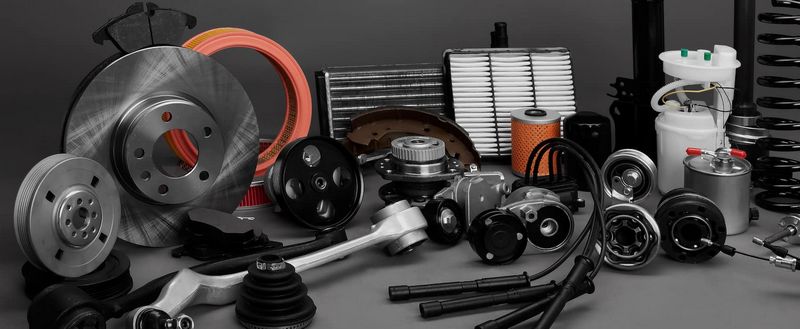
When it comes to replacing parts after a crash, there are two main options to consider: aftermarket replacement parts and OEM (Original Equipment Manufacturer) parts. Both options have their pros and cons, but one of the key factors that often comes up in the decision-making process is the quality of the parts.
Aftermarket parts:
Aftermarket parts are produced by third-party manufacturers and are designed to fit and function similarly to OEM parts. These parts are typically less expensive than OEM parts and offer a wider range of options in terms of brands and suppliers.
However, the quality of aftermarket parts can vary. Some aftermarket parts may be of equal or even higher quality than OEM parts, while others may be of lower quality. The key is to do your research and choose reputable aftermarket brands that have a good track record of quality and reliability.
OEM parts:
OEM parts are produced by the original manufacturer of the vehicle or its authorized suppliers. These parts are designed to meet the exact specifications and standards set by the vehicle manufacturer. As a result, OEM parts are typically considered to be of the highest quality and offer the best fit and performance.
However, OEM parts can also be more expensive than aftermarket parts. Additionally, there may be limited options available when it comes to choosing OEM parts, as they are specific to the vehicle make and model.
Choosing the right option:
Ultimately, the choice between aftermarket and OEM parts depends on your priorities. If quality and performance are your top concerns and cost is not a major issue, OEM parts may be the best choice for you. On the other hand, if cost is a significant factor and you are willing to do the necessary research to find high-quality aftermarket parts, they can be a viable and more affordable option.
It’s important to note that safety should always be a top priority, especially when it comes to replacing parts after a crash. Whether you choose aftermarket or OEM parts, make sure they meet the necessary safety standards and are installed correctly by a professional.
In summary,
- Aftermarket parts are typically less expensive but can vary in quality.
- OEM parts are of higher quality but can be more expensive and limited in options.
- Research reputable aftermarket brands or choose OEM parts for quality assurance.
- Prioritize safety and ensure proper installation by a professional.
Availability of Parts
After a crash, one of the main concerns is the availability of replacement parts. Whether you choose OEM or aftermarket parts, it is important to consider how easily accessible these parts are.
OEM parts, which are made by the original manufacturer of the vehicle, are generally more readily available. Car manufacturers have established supply chains and distribution networks to ensure that their OEM parts are easily accessible to consumers. This means that you are more likely to find OEM parts in stock at local dealerships or authorized repair shops.
On the other hand, aftermarket parts may not always be as easily accessible. Since aftermarket parts are produced by third-party manufacturers, their availability can vary depending on the brand and popularity of the part. While some common aftermarket parts may be readily available, more specialized or niche parts may be harder to find.
It is also worth noting that the availability of parts can be influenced by factors such as the age and make of the vehicle. For newer or popular vehicle models, both OEM and aftermarket parts are likely to be more readily available. However, for older or less common vehicle models, it may be more difficult to find OEM parts, and aftermarket options may be more limited as well.
To ensure the availability of parts after a crash, it is advisable to check with local dealerships, authorized repair shops, and online marketplaces. Doing some research beforehand can help you determine which type of parts are more readily available for your specific vehicle.
| OEM parts |
|
|
| Aftermarket parts |
|
|
Insurance Considerations
When it comes to replacing parts after a crash, insurance companies often have specific policies and considerations. Here are some important insurance considerations to keep in mind:
- Policy Coverage: Before deciding on OEM or aftermarket replacement parts, it’s important to review your insurance policy to see what is covered. Some policies may specify the use of OEM parts, while others may allow for aftermarket alternatives.
- Cost Considerations: Insurance companies typically consider the cost of repairs when determining coverage. OEM parts are generally more expensive than aftermarket parts, which may affect the amount of reimbursement you receive for the replacement.
- Quality of Parts: Insurers may also consider the quality of the parts being used for repairs. While OEM parts are designed to match the original specifications, aftermarket parts can vary in quality. Insurance companies may have specific guidelines regarding the use of aftermarket parts to ensure they meet certain standards.
- Warranty Status: Your insurance policy may also take into account the warranty status of your vehicle. If your car is still under warranty and requires repairs, using OEM parts may be necessary to maintain the warranty coverage.
- Preferred Repair Shops: Some insurance companies have preferred repair shops that they work with, and these shops may have specific policies regarding the use of OEM or aftermarket parts. It’s important to check with your insurer and the repair shop to understand their preferred parts options.
Ultimately, insurance considerations may play a role in determining whether to choose OEM or aftermarket replacement parts after a crash. It’s important to review your policy, consider cost and quality factors, and consult with your insurer and repair shop to make an informed decision.
Choosing the Right Parts for Your Vehicle
When it comes to getting your vehicle repaired after a crash, choosing the right replacement parts is crucial. There are two main options to consider: OEM (Original Equipment Manufacturer) parts and aftermarket parts.
OEM Parts: OEM parts are made by the same manufacturer that produced the original parts for your vehicle. These parts are designed to perfectly fit your vehicle and meet the same quality standards as the original parts. They are often more expensive than aftermarket parts, but they offer a higher level of quality and reliability.
Aftermarket Parts: Aftermarket parts are made by companies other than the original manufacturer. These parts are often less expensive than OEM parts, but the quality can vary. Some aftermarket parts may not fit as well or may not meet the same quality standards as OEM parts. However, there are also aftermarket parts that are equal or even superior in quality to OEM parts.
Considerations When Choosing Replacement Parts:
- Cost: Consider your budget and how much you are willing to spend on replacement parts. OEM parts are generally more expensive than aftermarket parts.
- Quality: Research the quality of both OEM and aftermarket parts for your specific vehicle make and model. Read reviews and consider the reputation of the manufacturers.
- Compatibility: Ensure that the replacement parts you choose are compatible with your vehicle’s make and model. OEM parts are designed specifically for your vehicle, while aftermarket parts may have variations in fit.
- Warranty: Check the warranty offered by the manufacturer or repair shop for both OEM and aftermarket parts. OEM parts often come with a warranty, while aftermarket parts may have varying warranty options.
Consult with Professionals: It is always a good idea to consult with a professional mechanic or repair shop to get their opinion on which replacement parts are best for your vehicle. They have experience and expertise in dealing with different types of parts and can provide valuable advice.
Ultimately, the decision between OEM and aftermarket parts depends on your specific needs, budget, and preferences. Assess the benefits and drawbacks of each option and make an informed choice that will ensure the safe and reliable operation of your vehicle after a crash.
FAQ:
What are OEM parts?
OEM stands for Original Equipment Manufacturer. These parts are made by the same company that produced the original parts for your vehicle.
What are aftermarket parts?
Aftermarket parts are produced by companies other than the original manufacturer. They are made to fit a wide range of vehicles and are often cheaper than OEM parts.
Are OEM parts always better than aftermarket parts?
Not necessarily. OEM parts are guaranteed to match the specifications of your vehicle, but aftermarket parts can sometimes offer better performance or lower prices. It depends on your specific needs and preferences.
Can aftermarket parts void my vehicle’s warranty?
It depends on the warranty. Some warranties may require the use of OEM parts for repairs, while others allow the use of aftermarket parts. It’s important to check the terms of your warranty before deciding on which parts to use.
Are aftermarket parts as safe as OEM parts?
Aftermarket parts can be just as safe as OEM parts if they are made by reputable manufacturers and meet the necessary safety standards. However, there may be some aftermarket parts that are of lower quality, so it’s important to do your research before purchasing.
What are OEM parts?
OEM stands for Original Equipment Manufacturer. These parts are made by the same manufacturer that produced the original parts for the vehicle. They are designed to fit and function exactly like the original parts, making them the closest replacement option to the original ones.
What are aftermarket parts?
Aftermarket parts are replacement parts that are made by companies other than the original manufacturer. These parts are often cheaper than OEM parts and can vary in quality. They may not be an exact match for the original parts, but they can still be a good alternative in terms of functionality and cost.
